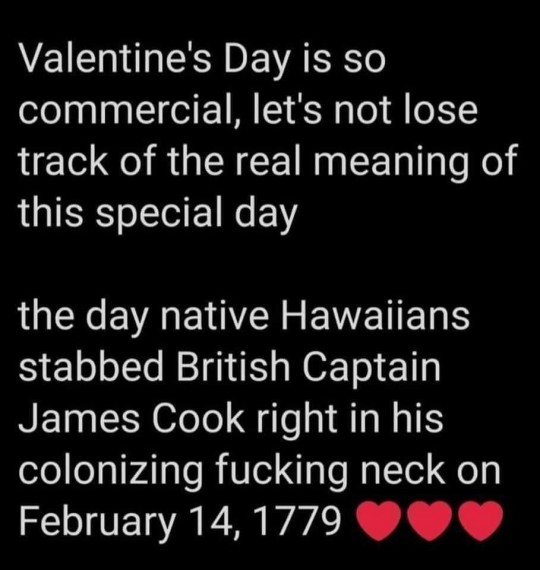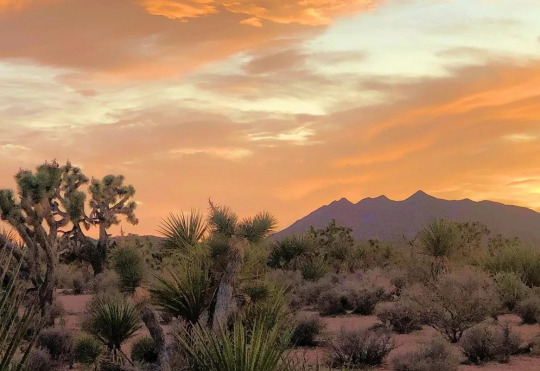#Native Hawaiian
Text
Interior Department Announces New Guidance to Honor and Elevate Hawaiian Language

"In commemoration of Mahina ʻŌlelo Hawaiʻi, or Hawaiian Language Month, and in recognition of its unique relationship with the Native Hawaiian Community, the Department of the Interior today announced new guidance on the use of the Hawaiian language.
A comprehensive new Departmental Manual chapter underscores the Department’s commitment to further integrating Indigenous Knowledge and cultural practices into conservation stewardship.
“Prioritizing the preservation of the Hawaiian language and culture and elevating Indigenous Knowledge is central to the Biden-Harris administration's work to meet the unique needs of the Native Hawaiian Community,” said Secretary Deb Haaland. “As we deploy historic resources to Hawaiʻi from President Biden’s Investing in America agenda, the Interior Department is committed to ensuring our internal policies and communications use accurate language and data."
Department bureaus and offices that engage in communication with the Native Hawaiian Community or produce documentation addressing places, resources, actions or interests in Hawaiʻi will use the new guidance on ‘ōlelo Hawaiʻi (Hawaiian language) for various identifications and references, including flora and fauna, cultural sites, geographic place names, and government units within the state. The guidance recognizes the evolving nature of ‘ōlelo Hawaiʻi and acknowledges the absence of a single authoritative source. While the Hawaiian Dictionary (Pukui & Elbert 2003) is designated as the baseline standard for non-geographic words and place names, Department bureaus and offices are encouraged to consult other standard works, as well as the Board on Geographic Names database.
Developed collaboratively and informed by ʻōlelo Hawaiʻi practitioners, instructors and advocates, the new guidance emerged from virtual consultation sessions and public comment in 2023 with the Native Hawaiian Community.
The new guidance aligns with the Biden-Harris administration’s commitment to strengthening relationships with the Native Hawaiian Community through efforts such as the Kapapahuliau Climate Resilience Program and Hawaiian Forest Bird Keystone Initiative. During her trip to Hawaiʻi in June, Secretary Haaland emphasized recognizing and including Indigenous Knowledge, promoting co-stewardship, protecting sacred sites, and recommitting to meaningful and robust consultation with the Native Hawaiian Community."
-via US Department of the Interior press release, February 1, 2024
--
Note: I'm an editor so I have no idea whether this comes off like as big a deal as it potentially is. But it is potentially going to establish and massively accelerate the adoption of correctly written Native Hawaiian language, as determined by Native Hawaiians.
Basically US government communications, documentations, and "style guides" (sets of rules to follow about how to write/format/publish something, etc.) can be incredibly influential, especially for topics where there isn't much other official guidance. This rule means that all government documents that mention Hawai'i, places in Hawai'i, Hawaiian plants and animals, etc. will have to be written the way Native Hawaiians say it should be written, and the correct way of writing Hawaiian conveys a lot more information about how the words are pronounced, too, which could spread correct pronunciations more widely.
It also means that, as far as the US government is concerned, this is The Correct Way to Write the Hawaiian Language. Which, as an editor who just read the guidance document, is super important. That's because you need the 'okina (' in words) and kahakō in order to tell apart sizeable sets of different words, because Hawaiian uses so many fewer consonants, they need more of other types of different sounds.
And the US government official policy on how to write Hawaiian is exactly what editors, publishers, newspapers, and magazines are going to look at, sooner or later, because it's what style guides are looking at. Style guides are the official various sets of rules that books/publications follow; they're also incredibly detailed - the one used for almost all book publishing, for example, the Chicago Manual of Style (CMoS), is over a thousand pages long.
One of the things that CMoS does is tell you the basic rules of and what specialist further sources they think you should use for writing different languages. They have a whole chapter dedicated to this. It's not that impressive on non-European languages yet, but we're due for a new edition (the 18th) of CMoS in the next oh two to four years, probably? Actually numbering wise they'd be due for one this year, except presumably they would've announced it by now if that was the case.
I'm expecting one of the biggest revisions to the 18th edition to add much more comprehensive guidance on non-Western languages. Considering how far we've come since 2017, when the last one was released, I'll be judging the shit out of them if they do otherwise. (And CMoS actually keep with the times decently enough.)
Which means, as long as there's at least a year or two for these new rules/spellings/orthographies to establish themselves before the next edition comes out, it's likely that just about every (legit) publisher will start using the new rules/spellings/orthographies.
And of course, it would expand much further from there.
#don't ask me about the magazine and newspaper half of this#bc I do Not know AP style#except the differences I'm annoyed at lol#ap doesn't respect the oxford comma#hawaii#hawaiʻi#language#orthography#linguistics#language stuff#hawaiian#native hawaiian#united states#publishing#book publishing#indigenous#indigineous people#indigenous languages#language revitalization#language resources#editorial
381 notes
·
View notes
Text
497 notes
·
View notes
Text
I just want to say that as someone who is Native Hawaiian on my moms side and Inuk/Italian on my dads Sokka, Katara, and both of the water tribes meant so much to me as a child and even now
If there are native characters in media (ESPECIALLY INUK) usually they’re marked as token characters and not given a whole lot of depth, much less made a main character
It’s gotta be one of the largest reasons I will watch A:tLA and LoK for the rest of my life, the cultural accuracy (for the most part) and representation is unmatched in any other media
#avatar the last airbender#sokka#atla#sokka avatar the last airbender#Katara#southern water tribe#northern water tribe#Inuk#Inuit#inuvialuit#native representation#native hawaiian
78 notes
·
View notes
Text

#february 14#valentines day#native hawaiian#british colonialism#captain james cook#rest in piss#rot in piss#1779#history#antifa#antifascist#antifaschistische aktion#class war#anti colonialism#anti colonization#hawaii#antiauthoritarian#antinazi#colonialism#colonial violence#colonial america#colonial history#colonization#colonizers#ausgov#politas#auspol#tasgov#taspol#australia
33 notes
·
View notes
Text
Since 2009, a group called the Thirty Meter Telescope International Observatory had been trying to build a $1.5 billion Thirty Meter Telescope (TMT) on top of Mauna Kea, which they said would give scientists an even better opportunity to observe the emergence of new planets, stars, and galaxies than the telescopes that are already there. But throughout history, Native Hawaiians have held sacred ceremonies on the mountain to bury their most beloved ancestors as well as the ‘iewe (placenta) and piko (umbilical cord) of their newborns—so to them the mountain is family. And tradition. And love. And that’s why many, including Mahelona, activated to protect it, setting up camp to block the access road developers would need to take to start construction.
“As Native Peoples, our land and our stories and our traditions have been ripped away from us,” she says. “And that’s because, for Western imperialism and their systems, nothing is sacred. The message of colonization is: You are not sacred, and this land is not sacred. Whatever you do to take care of yourself and your land is invalid. That’s why we’re always going to be fighting for land justice and water justice and climate justice and liberation.”
True to her word, four years later, Mahelona is continuing to fight for a variety of causes—including water justice around the Red Hill water crisis on O‘ahu and land and climate justice following the devastating Maui fires on August 8. But her way of fighting these injustices is a little different from what you might expect. Inspired by her time on Mauna Kea, Mahelona left her job as a bank accountant to become a grief worker who uses ceremonial rituals to help people process their emotions and heal. And to her, grief work is activism work; the two are inextricably linked.
—
🚨 want more materials like these? this resource was shared through BFP’s discord server! everyday, dozens of links and files are requested and offered by youth around the world! and every sunday, these youth get together for virtual teach-ins. if you’re interested in learning more, join us! link in our bio! 🚨
#resources#native hawaiian#hawai'i#maui wildfires#environmental justice#native#indigenous#decolonization
36 notes
·
View notes
Text





MY MAN CRUSH MONDAY IS...JASON MOMOA
FULL NAME: Joseph Jason Namakaeha Momoa
DATE OF BIRTH: August 1, 1979
PLACE OF BIRTH: Honolulu, Hawaii
AGE: 43
SIGN: Leo
BEST KNOWN FOR: Portraying Jason Ione on the action drama series Baywatch Nights; Ronan Dee on the Syfy science fiction series Stargate Atlantis, Khal Drago on the HBO fantasy drama series Game of Throne; Aquaman in the DC Extended Universe (DCEU); Duncan Idaho in the science fiction film Dune; and Dante Reyes in Fast X.
HEIGHT: 6 feet and 4 inches
#mcm#mcm 2023#man crush#man crush monday#man crush mondays#jason momoa#native hawaiian#brown eyes#fast x 2023#hbo game of thrones#stargate atlantis#dc extended universe#aquaman#duncan idaho#dune#khal drogo#dante reyes#leo
53 notes
·
View notes
Text

🌺 Happy AAPI month ! ! ! 🌺
Although I'm not able to celebrate my heritage at home, I still wanted to embrace it a little with a drawing!
#my art#aapi#aapi month#kanaka maoli#native hawaiian#i kNow i shouldve posed myself better for reference but its been years since ive been in hula AAAghH and im no miss aloha HH bUT#i had fun nonetheless reminiscing!!!#was half tempted to also make this post longer on things i love being hawaiian and kanaka maoli about but perhaps for another post lol
55 notes
·
View notes
Text

"Extraordinary feats of surf swimming by Sandwich Islanders." Marvelous wonders of the whole world. 1896.
Internet Archive
364 notes
·
View notes
Text







Auli'i Cravalho for Grumpy (ph: Sami Drasin)
#auli'i cravalho#auliicravalhoedit#darby and the dead#moana#crush#all together now#native hawaiian#asian american#asiansincinema#asiancentral#polynesian#wonderfulwoc#dailywoc#glamoroussource#flawlessbeautyqueens#dailywomanedit#dailywomansource#dailyfemale#disney#pocedit#pocsource#pochollywood
41 notes
·
View notes
Text
https://ictnews.org/news/biden-designates-avi-kwa-ame-a-national-monument

Joe Biden designates Avi Kwa Ame a national monument
President Joe Biden announced on Tuesday Avi Kwa Ame as a national monument in Nevada, following up on a promise he made in late 2022.
Biden also declared a national monument in Texas and the creation of a marine sanctuary in U.S. waters near the Pacific Remote Islands southwest of Hawai'i.
Biden spoke at the White House Conservation in Action Summit at the Interior Department with Fort Mojave Indian Tribal Chairman Timothy Williams commending him during his introduction.
“Under his leadership we have a seat at the table and we are seeing an unprecedented era and opportunity for our tribal communities,” Williams said. “And we are all grateful to the president for taking historic action to combat the climate crisis and conserve and restore our nation’s land and waters.”
Williams was among the proponents to make Avi Kwa Ame, also known as Spirit Mountain, a national monument. It’s considered sacred to the Mojave people and for the nine other Yuman-speaking tribes along the Colorado River, as well as the Hopi and Chemehuevi Paiute tribes, Williams said.
The site in southern Nevada spans more than 500,000 acres near the Arizona and California state lines. It’s home to bighorn sheep, desert tortoises and a large concentration of Joshua trees, some of which are more than 900 years old. It’s also listed on the National Register of Historic Places.
It took more than three months for Biden to make the announcement.
“It’s a place of reverence, it’s a place of spirituality, it’s a place of healing and now it will be recognized for its significance it holds and be preserved forever,” Biden said. “I look forward to visiting it myself.”
He thanked Williams and the legislative leaders who advocated for Avi Kwa Ame including Nevada Rep. Dina Titus, Democrat, who sponsored a bill to protect the rugged region near the Mojave National Preserve from development, including solar farms and a proposed wind farm.
“To the native people who point to Avi Kwa Ame as their spiritual birthplace, and every Nevadan who knows the value of our cherished public lands: Today is for you,″ Titus tweeted.
The Honor Avi Kwa Ame coalition, which includes tribes, local residents, state lawmakers and conservation groups, said its members were "overjoyed" to learn the site will be a new national monument.
"Together, we will honor Avi Kwa Ame today — from its rich Indigenous history, to its vast and diverse plant and wildlife, to the outdoor recreation opportunities created for local cities and towns in southern Nevada by a new gorgeous monument right in their backyard," the group said.
Interior Secretary Deb Haaland released a press release praising the announcement.
“I am grateful to President Biden for taking this important step in recognition of the decades of advocacy from tribes and the scientific community, who are eager to protect the objects within its boundaries,” Haaland stated.“Together with tribal leaders, outdoor enthusiasts, local elected officials, and other stakeholders, we will manage this new monument for the benefit of current and future generations.”
In Texas, Biden plans to create the Castner Range National Monument in El Paso. It’s the ancestral homeland of the Comanche and Apache people, and its cultural ecology is considered sacred to several Indigenous communities.
The designation will protect the cultural, scientific and historic objects found within the monument's boundaries, honor U.S. veterans, service members and tribal nations, and expand access to outdoor recreation on public lands, the White House said.
Located on Fort Bliss, Castner Range served as a training and testing site for the U.S. Army during World War II, the Korean War and the Vietnam War. The Army ceased training at the site and closed Castner Range in 1966.
The Castner Range monument "will preserve fragile lands already surrounded on three sides by development,'' help ensure access to clean water and protect rare and endangered species, said Rep. Veronica Escobar, Democrat-Texas.
“The people of El Paso have fought to protect this for 50 years. Their work has finally paid off,” Biden said.
Biden designated his first national monument, in Colorado, last year. In 2021, he restored the boundaries for Bears Ears National Monument in Utah after they were significantly narrowed by President Donald Trump, a Republican.
In the Pacific, Biden will direct the Commerce Department to consider initiating a new national marine sanctuary designation within 30 days to protect all U.S. waters around the Pacific Remote Islands. If completed, the 777,000 square miles, southwest of Hawaii, will help ensure the U.S. reaches Biden's goal to conserve at least 30 percent of ocean waters under U.S. jurisdiction by 2030, the White House said.
Among Hawaiian state leaders, Biden thanked Native Hawaiian leaders who “worked tirelessly to protect our oceans. I want to thank you. I genuinely mean it, it wouldn't have happened without you.”
Biden also announced a series of steps to conserve, restore and expand access to public lands and waters across the country, the White House said.
The proposals seek to modernize management of America's public lands, harness the power of the ocean to help fight climate change, and better conserve wildlife corridors. Biden also will announce new spending to improve access to outdoor recreation, promote tribal conservation and reduce wildfire risk.
Bidden added he’s committed to working with tribal leaders and legislative leaders on bringing “healthy and abundant” salmon run back to the Colorado River system.
“There’s nothing beyond our capacity if we work together,” Biden said.
66 notes
·
View notes
Text
https://www.popsci.com/science/hawaii-policy-transfers-astronomy-control/
#indigenous#native american#ndn#free hawaii#hawai'i#native hawaiian#mauna kea#astronomy#land stewardship#stolen land#land back
205 notes
·
View notes
Text
surfing test animation 2
#test animation#animation#animating#surfing#surfer girl#surfboard#art#digital art#csp#clip studio paint#native hawaiian#hawaiian#hawaiʻi
10 notes
·
View notes
Text
Tayla Nohealeimamo Kamaekukauikapono Ta’uhere Vaugn Darval
#hawaiian#hawaiian art#native hawaiian#native hawaiian art#kanaka maoli#kanaka maoli art#art digital art#animation#digital animation#procreate#hawaii#hawai’i#merrie monarch#merrie monarch art
18 notes
·
View notes
Text

#lilo and stitch#lilo & stitch#disney movies#disney characters#the little mermaid#princess ariel#the little mermaid 2023#little mermaid#little mermaid 2023#black ariel#native hawaiian#nani and lilo#colorism#racism#bigotry#whitewashing#movie casting#youtube comments#disney films#live action ariel#live action disney#live action remake#movie remake
23 notes
·
View notes
Photo

Kumulaʻau Sing (Lloyd Kumulaʻau Sing, Jr.), Native Hawaiian - Fish trap for wrasse (a type of fish) x / x
20 notes
·
View notes
Text
i really feel bad for the hawaiians. they just suffered from this horrible fire and now they have to worry that their rebuilt homes are going to be taken away from them. indigenous people really get no respect and i hate it so much. i wish i was rich enough to help them.
12 notes
·
View notes